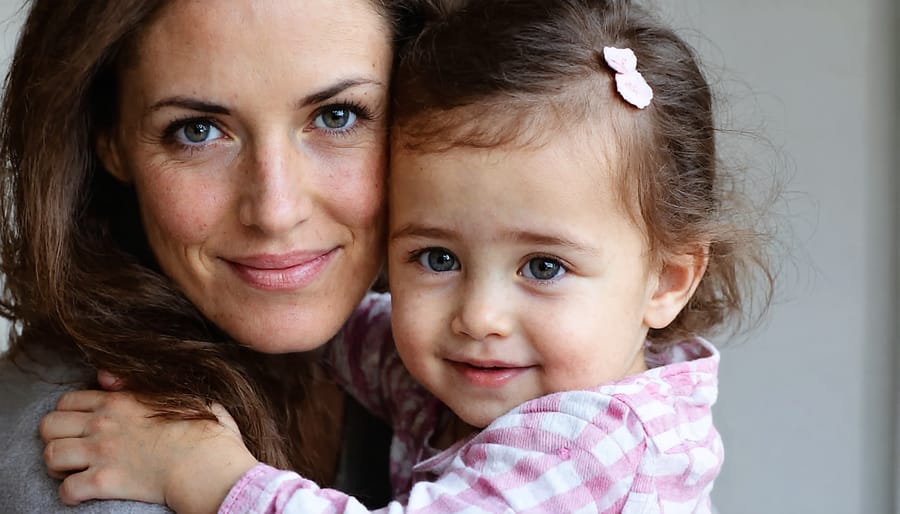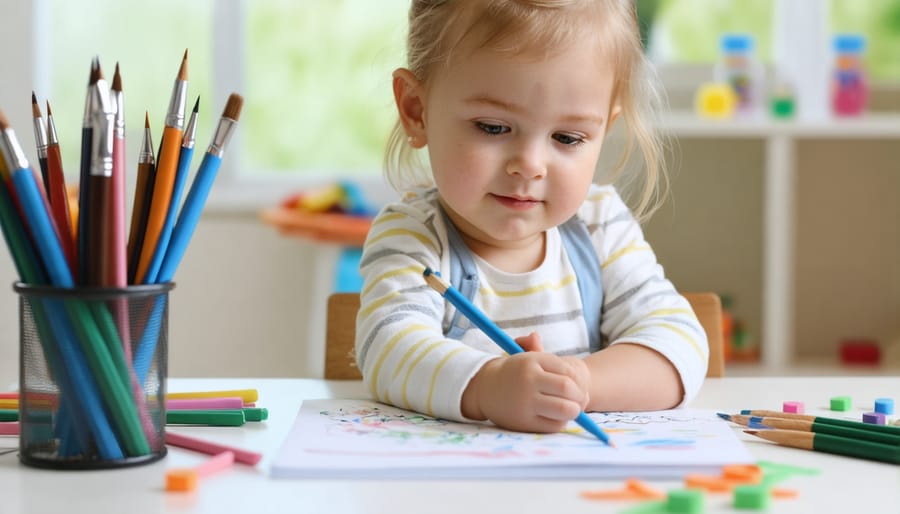The invisible threads of our earliest relationships shape our entire emotional world. When trauma disrupts these vital connections during childhood, it creates ripples that can affect everything from our closest relationships to our daily interactions. Attachment trauma – the deep wounds that form when early caregiving relationships are disrupted, inconsistent, or harmful – fundamentally alters how we view ourselves and navigate relationships throughout life.
Yet understanding attachment trauma offers more than just insight into our past hurts – it illuminates a path toward healing. Through advances in neuroscience and trauma therapy, we now know that our brains remain remarkably adaptable, capable of forming new, healthy attachment patterns at any age. Whether you’re a parent seeking to break generational cycles, a professional working with trauma survivors, or someone exploring their own attachment history, recognizing these patterns is the first step toward transformation.
In this article, we’ll explore how early trauma shapes attachment, identify key signs of attachment wounds, and most importantly, discuss evidence-based strategies for fostering secure connections and emotional resilience. Because while we cannot change our past experiences, we can actively reshape our relationship patterns and create deeper, more nurturing bonds moving forward.
Understanding Attachment Theory in Child Development
The Four Attachment Styles
Attachment styles develop early in life based on our relationships with primary caregivers, shaping how we form and maintain relationships throughout our lives. Understanding these patterns can help us recognize and heal from attachment-related trauma.
Secure attachment develops when caregivers consistently meet a child’s physical and emotional needs. These individuals typically feel confident in relationships, can regulate emotions effectively, and maintain healthy boundaries. They’re comfortable with both intimacy and independence.
Anxious attachment often forms when caregiving is inconsistent. People with this style may fear abandonment, seek excessive reassurance, and struggle with emotional dependency. They might feel overwhelmed by separation and have difficulty trusting others’ commitment to them.
Avoidant attachment typically develops when caregivers are emotionally unavailable or dismissive. These individuals tend to be highly self-reliant, uncomfortable with emotional intimacy, and may withdraw when others get too close. They often pride themselves on independence but struggle to form deep connections.
Disorganized attachment usually results from severe trauma or abuse. People with this style often display contradictory behaviors, simultaneously craving and fearing close relationships. They may struggle with consistent emotional responses and have difficulty trusting others or themselves.
Remember that attachment styles aren’t fixed – with awareness, support, and appropriate therapeutic intervention, people can develop more secure attachment patterns and heal from past trauma.


How Trauma Disrupts Healthy Attachment
Common Signs of Attachment Trauma
Recognizing the signs of attachment trauma can help caregivers and professionals provide appropriate support and intervention. These signs often manifest differently across age groups and individuals, but there are several common indicators to watch for.
In children, attachment trauma frequently appears through difficulty with emotional regulation. You might notice intense reactions to seemingly minor situations, trouble calming down after upset, or extreme fear of abandonment. Many children display a pattern of either excessive clinginess or unusual emotional detachment from caregivers.
Behavioral signs often include:
– Resistance to comfort when distressed
– Difficulty maintaining eye contact
– Unexplained aggressive behavior
– Strong reluctance to try new things
– Problems forming friendships with peers
– Controlling or manipulative behavior
– Frequent lying or stealing
Emotional indicators may present as:
– Intense fear of rejection
– Low self-worth
– Chronic anxiety
– Difficulty expressing emotions
– Unexplained shame or guilt
– Trust issues with authority figures
– Persistent feeling of being “different” or “unwanted”
Physical manifestations can include:
– Sleep disturbances
– Eating disorders
– Unexplained stomach aches or headaches
– Regression in developmental milestones
– Physical tension or difficulty relaxing
As Dr. Sarah Thompson, child psychologist, notes: “These signs aren’t just ‘bad behavior’ – they’re a child’s way of communicating deep emotional needs and past hurts. Understanding this helps us respond with patience and compassion rather than frustration.”
Remember that the presence of these signs doesn’t automatically indicate attachment trauma, but they warrant attention and possibly professional evaluation, especially when multiple indicators appear consistently.
The Healing Journey: Repairing Attachment Wounds
Creating Safe Spaces for Recovery
Creating a safe environment for trauma recovery requires consistent, patient effort from caregivers. Start by establishing predictable routines that help children feel secure in knowing what comes next. Simple practices like regular mealtimes, bedtime rituals, and daily check-ins can provide the stability needed for healing.
Physical spaces should be organized and calm, with quiet areas where children can retreat when feeling overwhelmed. Consider creating a “comfort corner” with soft pillows, calming activities, and self-soothing tools like stress balls or weighted blankets.
Emotional safety is equally crucial. Practice active listening without judgment, allowing children to express their feelings freely. Validate their emotions with responses like, “I understand why you felt scared” or “It’s okay to feel angry about that.” This helps them learn that their feelings are normal and acceptable.
Set clear, consistent boundaries while remaining flexible enough to accommodate emotional needs. When children know their limits and expectations, they feel more secure. However, remember that healing isn’t linear – there will be good days and challenging ones.
Build trust through reliability and transparency. If changes to routine are necessary, explain them in advance. Keep promises, no matter how small, as this reinforces that you are dependable. When trust is broken, acknowledge it honestly and work together to repair the relationship.
Remember that creating safe spaces is an ongoing process that requires patience, understanding, and continuous adaptation to your child’s evolving needs.

Supporting Your Child Through Recovery
Recovery from attachment trauma requires consistent, patient support from caregivers. As a parent supporting children with trauma, your steady presence and understanding are powerful healing tools. Start by creating a predictable daily routine that helps your child feel secure. This might include regular meal times, consistent bedtime rituals, and scheduled one-on-one time.
Practice active listening without judgment when your child expresses difficult emotions. Validate their feelings with phrases like “I hear you” and “It’s okay to feel this way.” Remember that healing isn’t linear – some days will be harder than others.
Maintain calm during challenging moments, as your emotional stability helps regulate your child’s nervous system. Use gentle physical touch when appropriate and welcomed by your child, such as a light hand on the shoulder or a side hug.
Work closely with mental health professionals who specialize in childhood trauma. They can guide you in implementing specific therapeutic techniques at home and help you understand your child’s unique healing journey. Remember to also take care of yourself – your emotional wellbeing directly impacts your ability to support your child effectively.
Understanding attachment trauma can feel overwhelming, but there is always hope for healing and growth. With proper support, patience, and understanding, individuals can work through their attachment wounds and develop healthier relationships. Remember that healing is a journey, not a destination, and every small step counts. By recognizing the impact of trauma and actively engaging in the healing process, both caregivers and those affected can move toward more secure attachments and emotional well-being. You’re not alone on this path, and support is available to help guide you through the journey of healing and recovery.


